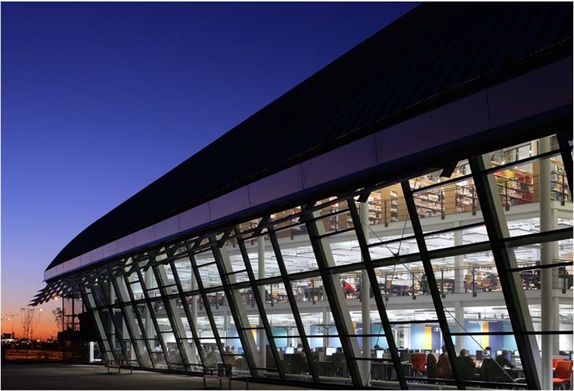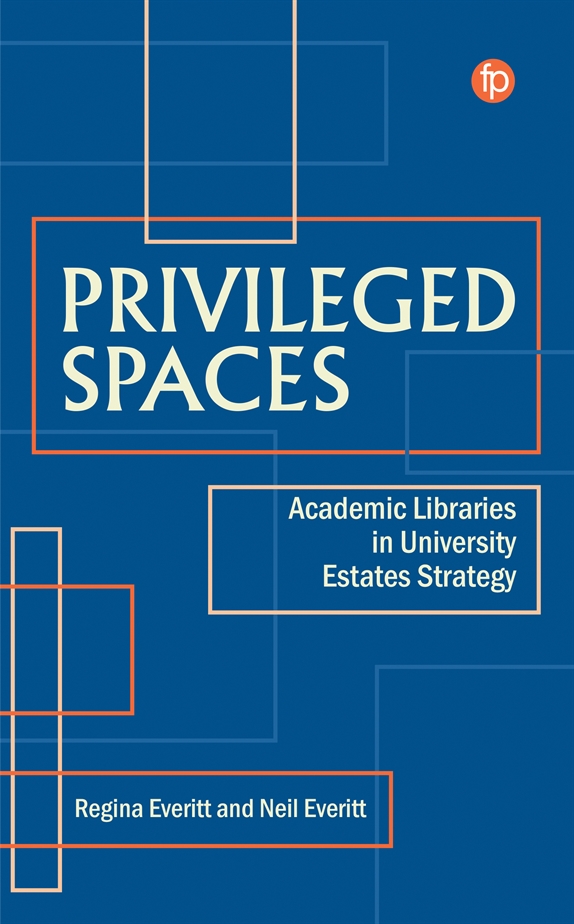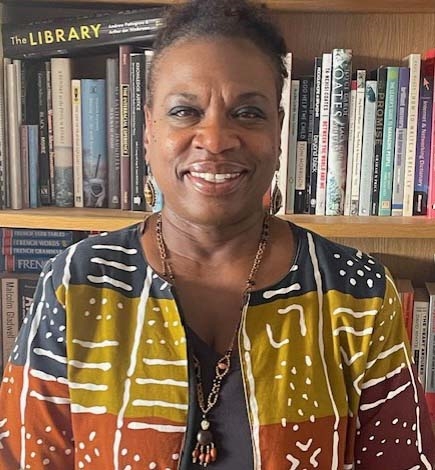
AS market forces load more pressure on universities, libraries are seen as just another piece of real estate. A new book published by Facet aims to help library leaders communicate with estates and facilities management teams.
ONCE upon a time facilities management (FM) was outsourced as cheaply as possible and only noticed if something went wrong with it. But the FM profession has undergone a revolution and is often positioned more closely to university decision-makers
than academic departments or the library.
The challenges caused by this turnaround are explored by Regina and Neil Everitt – the former is a library director, the latter a facilities management professional body leader - in their book Privileged Spaces
Regina, the Assistant Chief Operating Officer and Director of Library, Archives and Learning Services at the University of East London, was inspired to write the book by her experience of leading UEL’s Stratford Library through difficult
changes.

“It was a very challenging period” she said, noting that librarians are not formally trained to manage major building projects. “This book is something they can turn to for guidance and experience,” she said, adding that it was called
Privileged Spaces because “usually, if there were any needs for space changes, the libraries weren't approached… I don’t think that’s true anymore but there were a number of us who had our own little protected buildings.”
Difficult, frustrating, yet essential
In the second chapter of the book, Academic Libraries and Estates Strategy: A Library Leadership Perspective, Tim Wales, University Librarian at Cranfield University writes: “In my 20 years’ professional experience of leading UK
academic or research libraries, the most difficult, frustrating yet essential institutional relationship has been with the estates or facilities department”.
These challenges are illustrated by Regina and other authors in the book. “In my effort to protect the student spaces and experience, I may have appeared less collegiate than desirable by highlighting more problems than solutions,” she
wrote.
In an interview with Information Professional magazine (to be published in the May issue of IP) she said: “I think you do always have to highlight the risk - the potential negative impacts… At the end of the day, as director of the library,
if I don't advocate for my service, who will?”

Regina Everitt
The other side
But the book aims to increase understanding between library and FM professionals. The FM perspective is given by Co-editor, Neil Everitt, Regina’s husband, Director of Strategic Engagement at the Institute of Workplace Facilities Management
(IWFM). He said that historically FM was “outsourced and procured at ‘best value’” and operated in the background.
But now institutions understand that FM regulates the two most expensive elements of any organisation: people and property. “So, when organisations bring people together in space that is costing money,” Neil wrote, “there must be value
in doing so, be it through making connections or engendering joint purpose or enhancing culture.”
It is a view that senior leaders at universities have come to hold, often putting FM closer to university decision makers than academic departments and libraries. For example, Tim Wales, writes: “It is very rare, in my experience, for
library heads to be permanent members of estates strategy committees in UK universities. The estates director is usually the more senior of the two positions in terms of responsibility, budget and position in corporate governance.”
Selling
For Regina, an important point is that the crucial role of libraries is highlighted. “What I tried to get away from in this in this book is that the library falls to the bottom of the list of priorities.” She said: “Libraries, just like
any of the other entities in a university, will have to make the case for its funding.” One of the chapters she has written is called “Selling’ the University: The role of the Academic Library in which she acknowledges that “few (if
any) students will choose a university based on its library.”
But her review of the marketing materials of 20 UK institutions found that libraries were showcased in all of them. She also highlights that prospective students “are less interested in university-created website ‘sales’ content and prefer
first-person accounts from other students” many of which include pictures of students in libraries.
Practical advocacy
The book offers a number of practical solutions to the challenges involved in building projects. One is a process that every leader needs to undertake anyway: write a business case.
Regina points to the chapter by Anna O'Neill, University Librarian at the University of Warwick – A Practical Guide to Writing a Successful Business Case to Influence University Estates Strategy - in which Anna says business plans
are good conversation starters: “At the nexus of professional services and the faculty, library business cases can be well placed to garner wider support, deliver on multiple agendas and strategies and derive maximum benefit.”
She said: “The work you will do to understand and talk to your key stakeholders and professional services colleagues will have benefits across many other areas of your working life.”
Politics
Another key issue for professionals, both on the library side and FM is the misalignment between career paths and the length of building projects. Regina says, “So you have the overall institutional vision which means the project can
be handed from one estates director to another, or one library director to another. The theory is that since it's strategic, then - barring any major changes, like we are seeing now - you know that 10 years down the road the project
you envisioned should be up and running.”
She points to the chapter by John Cox, former University Librarian at the University of Galway, saying: “That was a project that went on for 25 years and construction of the building had not commenced by the time John retired in the
past year.”
In his chapter Politics, Persuasion and Persistence: The Learning Commons Project at the University of Galway, John wrote: “If the range of factors [described in the chapter] shaped the building, politics have driven the direction
of the project at large through a series of ups and downs, changes in institutional leadership, harnessing of student support...”.
He also said that different approaches are needed for different circumstances: “Some key moments have needed to be navigated and sometimes confronted robustly.”
Regina said: “So one of the key themes that came out in the book is that your proximity to, or access to the decision makers will have an impact on how well your voice is heard. And if that is the case, how do you build those partnerships
so that you can make sure that the needs of the service are heard at the right level?”
There are 17 contributors to the book from university libraries and estates departments across England and Ireland, including case studies from Northampton and Galway.



 Regina Everitt
Regina Everitt
